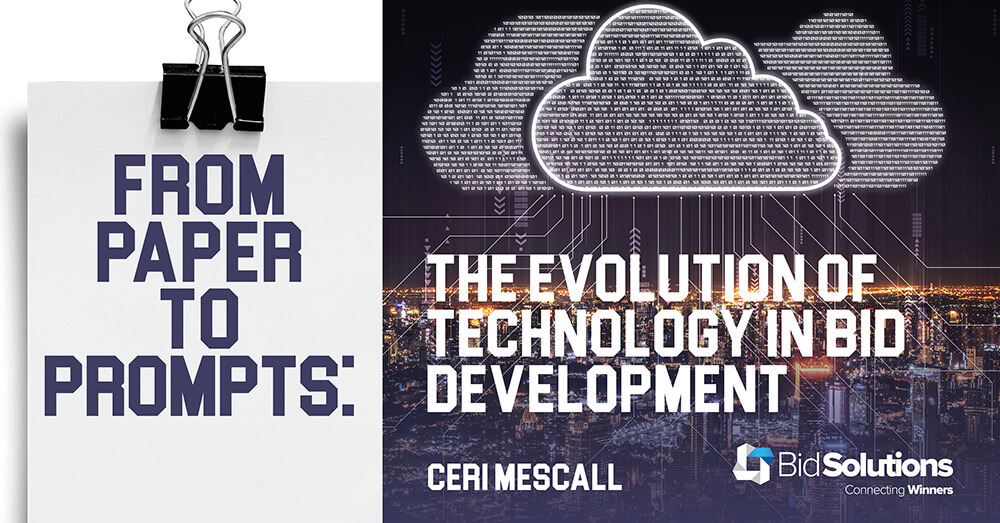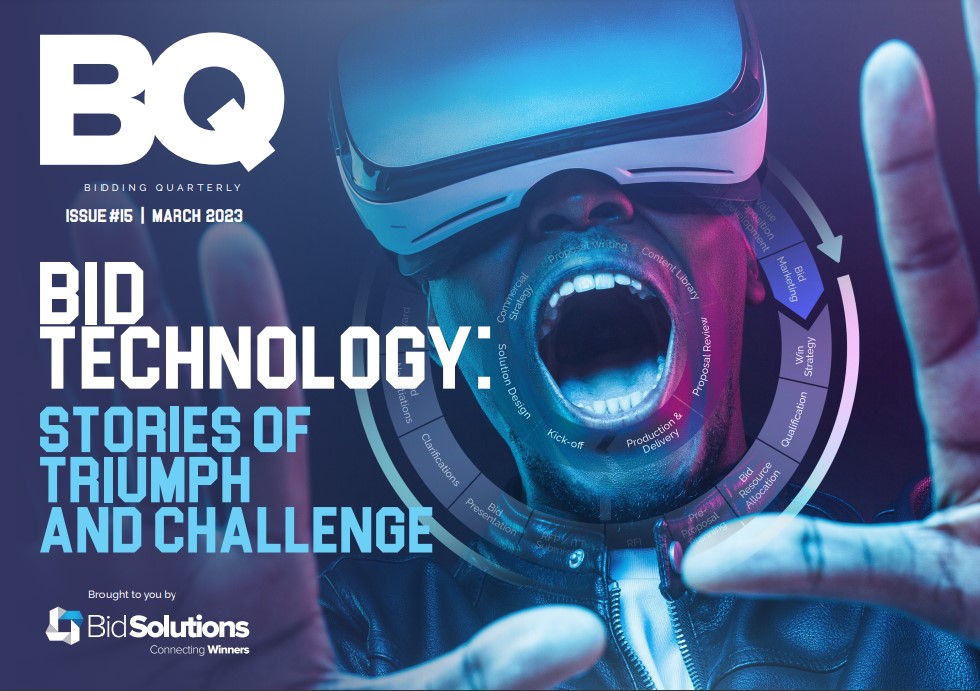
In November 2022, OpenAI launched ChatGPT. It was a catalyst for conversation about the use of generative Artificial Intelligence (AI) in business and education.
While the pace of technological advancement may be accelerating, the debate over the use of technology is not new. This article summarises my experience of technology throughout my bidding career.
Past
I began as a Bid Coordinator in 2006 when 95% of submissions were in hard copy. Production came with its own technology challenges. Before secure printing, our choices were: to ask everybody else in the office not to print until we’d finished; to stay in the office until the evening to print; or to hope for the best but then find another person’s printing in the middle of the appendices (hopefully before we’d used the binding machine). I remember finalising a multi-million-pound bid with a Sales Director who then had to find a standing fan to cool the overheating printer. I would rather forget one client who mandated a handwritten response.
Then electronic submissions became more commonplace. We learned how to navigate client portal nuances such as accounts linked to specific IP addresses so we couldn’t share logins; character/word count differences between portals and Microsoft Office; and the inevitable slowdowns on deadline days. Enhanced document design, interactivity, video, animation, and microsites followed.
The tech stack also progressed. We abandoned desktop PCs, desk phones and work mobile phones (usually Blackberry) in favour of laptops, tablets, and technology expense allowances. We upgraded temperamental, low capacity on-premises servers to cloud storage options. We advanced from relying on memory (“In which bid did we last answer that question?”) to libraries of curated content with meta tags and the rise of the Knowledge Manager role.
We trialled chatbots for bid content assistance, but most were based on keyword searches and needed human intervention to answer complex queries. Bid automation software became prevalent, but many organisations struggled with make vs. buy decisions, information security concerns, licensing cost structures, and user adoption challenges.
Recent past to present
The COVID-19 pandemic was an inflection point for remote working, and consequently, collaboration tools. The bid team I was working in served as a Microsoft Teams pilot group as part of an enterprise-wide rollout. We realised the benefits almost immediately – ease of use (more intuitive than SharePoint); reduced email traffic; improved version control; streamlined editing (no more merging multiple marked-up copies daily); increased accountability (assigning and prompting authors and reviewers in comments); and faster technical content generation (using the call record and transcription function for interviews with subject matter experts).
We also overcame challenges including resistance to change; complexities in consortium bids (toggling between different organisations’ versions of Teams); and video call fatigue (acceptance of “camera on/camera off” preferences). Presentations shifted from onsite to virtual, so we invested in home office technology including ring lights and microphones. Videos submitted as part of bid responses were less corporate and polished, and more authentic.
Bid automation providers are using data analytics and user feedback to continuously improve their solutions. They’ve also repositioned themselves as thought leaders, sharing industry insights through whitepapers and webinars.
Last year I became self-employed. Most of my clients opt to ship me laptops due to information security and access concerns. However, many of my peers use their own hardware/software with client Virtual Private Network (VPN) connections.
Future
In the article introduction, I mentioned ChatGPT as an example of generative AI. There are many others including Writesonic’s ChatSonic and Jasper Chat, and the upcoming Google Bard and Microsoft Bing AI.
Arguments against using this type of technology for bids include fear of the unknown; perception of unfairness (using technology to cut corners); potential job losses; information security, privacy, and Intellectual Property (IP) rights; bias in training data and algorithms; accuracy and recency of information; and plagiarism. GPT Zero is a tool designed to analyse text to determine if / whether it has been generated by AI.
Reasons for using generative AI for bids include conducting comprehensive yet fast research; reducing the time to first draft; summarising information (e.g., turning a full CV into a brief bio); improving tone of voice consistency (particularly useful for consortium bids); simplifying the complex (editing technical content to improve reading ease); and accelerating the bid/no bid process (searching the RFP for “dealbreakers”).
We may see new roles such as Prompt Engineers that combine the skillset of Bid Coordinators and Knowledge Managers. Bid Writers may refocus as Bid Editors. Bid Consultants will likely move from hourly/day rates to value-based pricing due to the time efficiencies.
And on the buyer side? They’ll likely use AI to write RFPs and evaluate responses (at least as a first pass).
What can you do to get (and stay) ahead of the curve?
Realise how far we’ve already come. Continue the conversation – connect with colleagues to discuss relevant use cases. Explore free trials and training. Share your stories of triumph and challenge with the wider bid community.
This article was written by Ceri Mescall.
Ceri is a Work Winning Consultant based in Victoria, British Columbia, Canada. She is trusted to sustain, elevate, and transform bid and proposal functions. Over her 16 year career, Ceri has enabled clients to secure almost $1 billion in sustainable, profitable work. She’s one of only 22 people globally (as of October 2022) who holds all four main APMP certifications. Ceri is also an APMP 40 Under 40 Award winner and an APMP Fellow.

